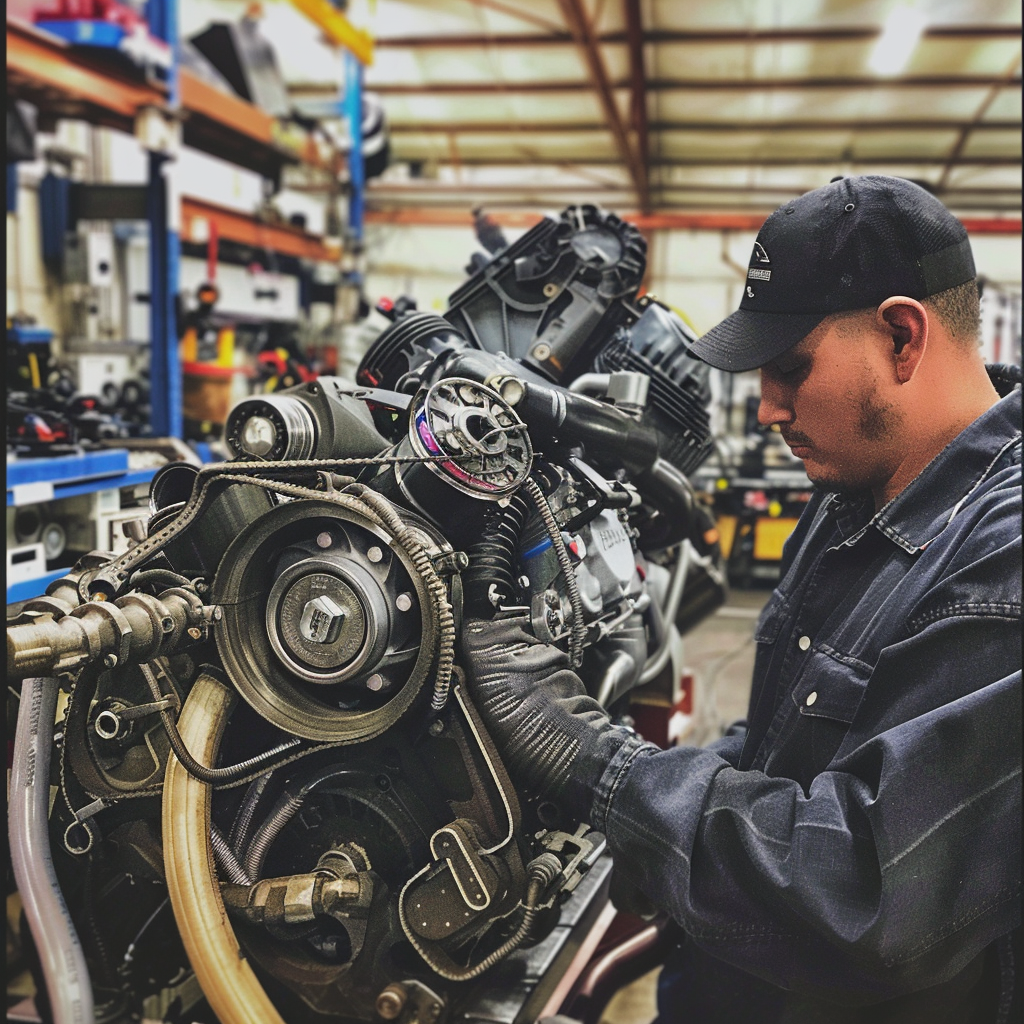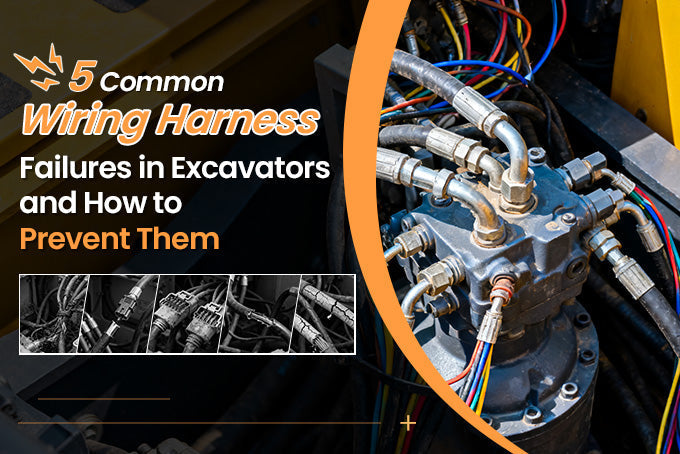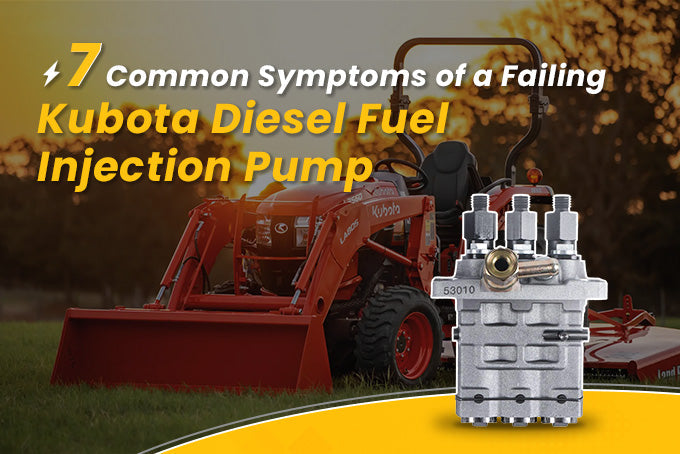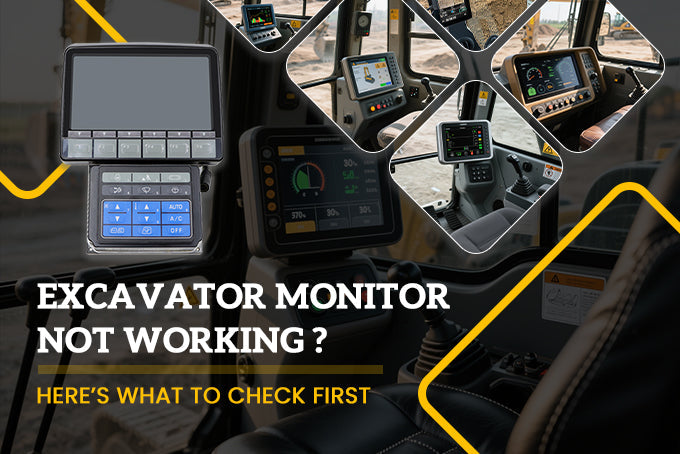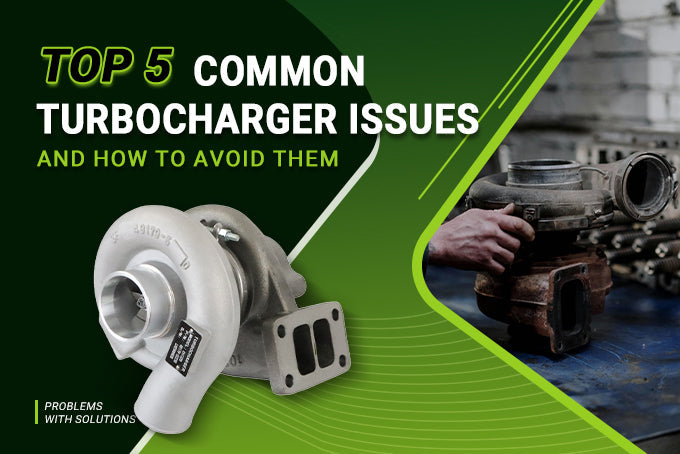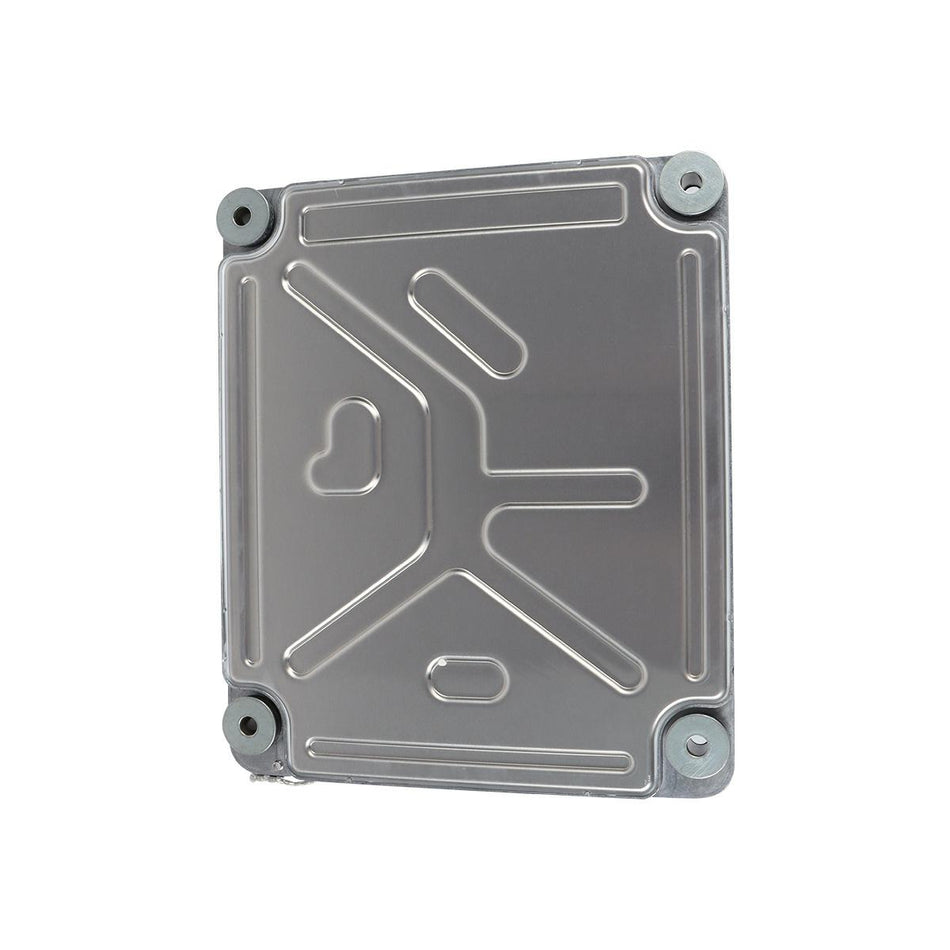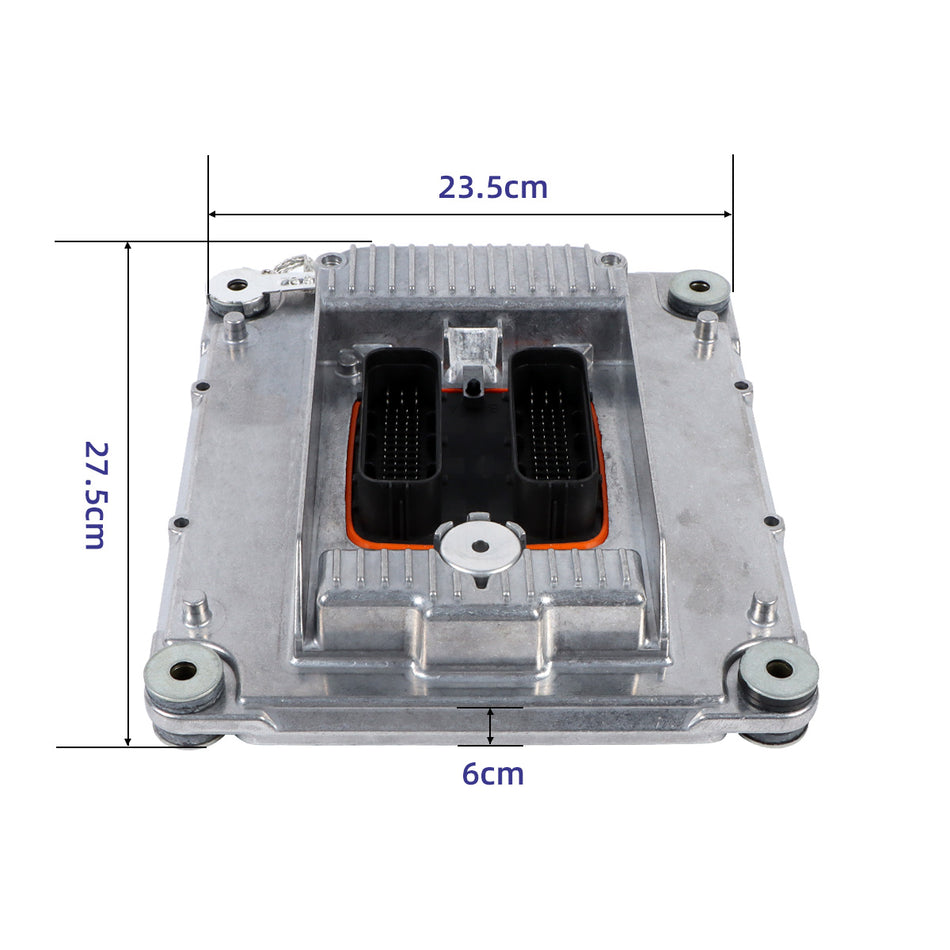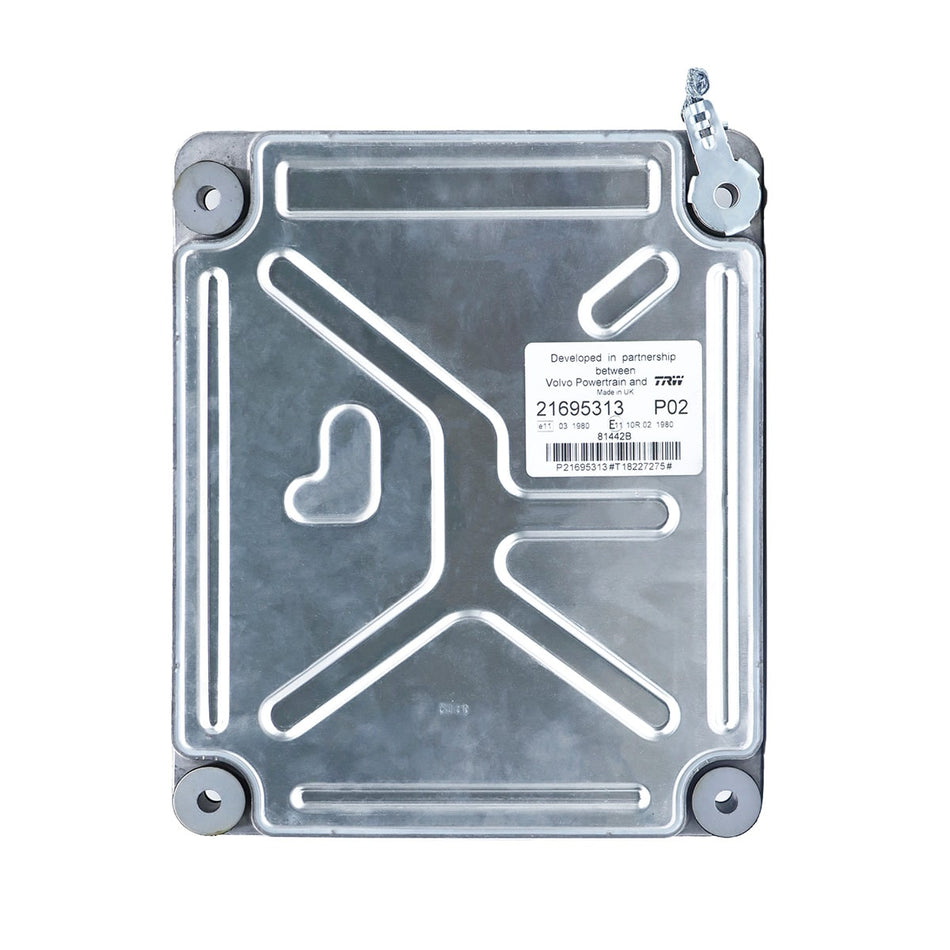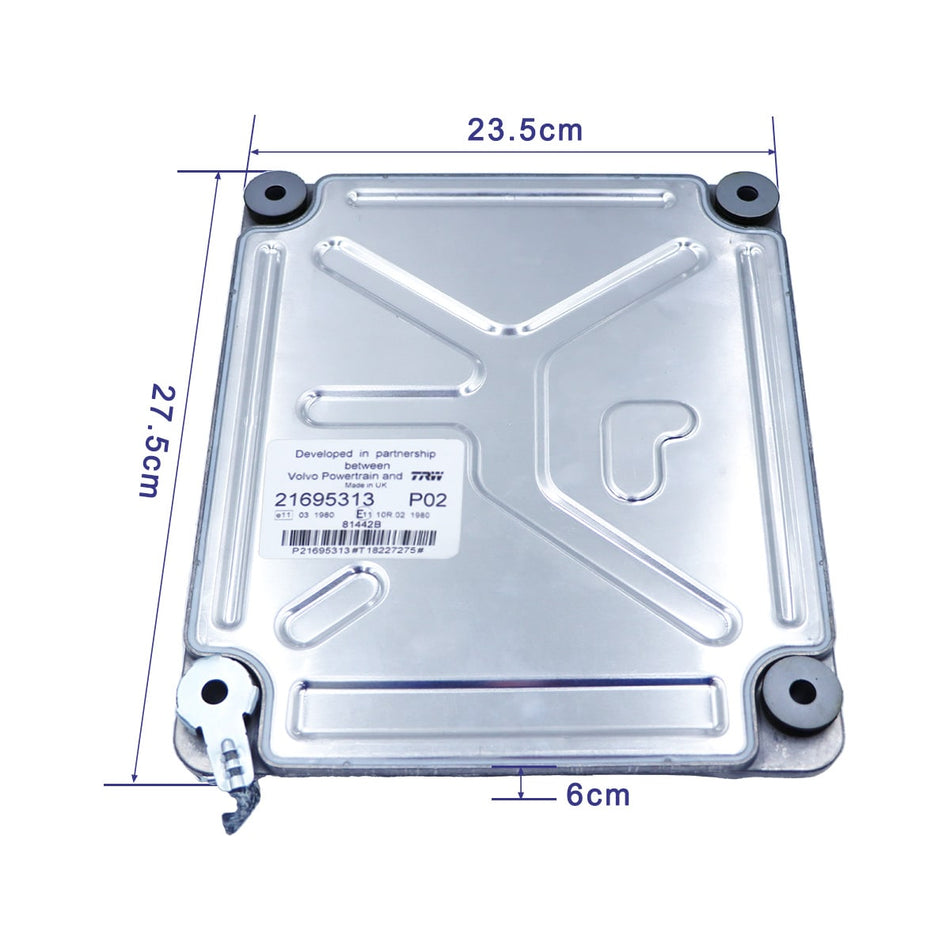Part 1: Overview of 6.0 Powerstroke Injectors
Compatible Models and Engine Years
6.0 Powerstroke injectors are designed for Ford Super Duty truck models ranging from 2003 to 2007. These trucks include the F-250, F-350, F-450, and F-550 series. The 6.0 Powerstroke engine is a V8 diesel engine, serving as one of Ford's primary powerplant options during this era.
Key Features
The 6.0 Powerstroke injectors utilize a high-pressure fuel rail system consisting of a high-pressure fuel pump, fuel injectors, and an injector control module. This design aims to provide better fuel atomization and combustion efficiency, resulting in improved power output and reduced emissions. Here are some key features of 6.0 Powerstroke injectors:
-
High-Pressure Fuel Rail System: Utilizes high-pressure fuel injection directly into the cylinders to enhance combustion efficiency.
-
Injector Control Module: Controls the fuel injection quantity and timing for each injector, ensuring uniform fuel delivery to each cylinder.
-
Injector Design: Precision-designed injectors atomize fuel into fine particles under high pressure, aiding in more complete and efficient combustion.
How 6.0 Powerstroke Injectors Work
The operation of 6.0 Powerstroke injectors involves injecting fuel directly into each cylinder using the high-pressure fuel rail system. Here's how the system works:
-
High-Pressure Fuel Pump: Draws diesel from the fuel tank and compresses it to a high-pressure state. The high-pressure fuel pump delivers fuel through high-pressure fuel lines to the injectors.
-
Fuel Injectors: Positioned at the top of each cylinder, the fuel injectors receive pressurized fuel from the high-pressure fuel lines. Inside the cylinder, the injectors atomize the fuel into tiny fuel particles. These fine particles combust more readily, enhancing combustion efficiency.
-
Injector Control Module: Responsible for controlling the amount and timing of fuel injected by the injectors. Based on engine load and RPM parameters, the injector control module determines when and how much fuel to inject into each cylinder.
What Are the Best Injectors for 6.0 Powerstroke
When selecting the best injectors for a 6.0 Powerstroke engine, several factors should be considered:
-
Performance: High-quality injectors should provide consistent fuel delivery, ensuring good combustion efficiency and power output.
-
Durability: Injectors should be durable and reliable, capable of withstanding prolonged periods of high pressure and temperatures.
-
Brand Reputation: Opt for reputable brands of injectors, as they often come with better quality assurance and after-sales support.
-
Compatibility: Ensure that the chosen injectors are compatible with your 6.0 Powerstroke engine and vehicle model to ensure a perfect fit and installation.
Choosing the best injectors for your 6.0 Powerstroke involves considering these factors to ensure optimal performance and reliability. Researching and selecting a reputable brand can lead to better engine performance and longevity.
What Size Are Stock Injectors for 6.0 Powerstroke?
The stock injectors for a 6.0 Powerstroke engine are an integral component of the fuel delivery system. Understanding their size and function is crucial for maintaining optimal engine performance.
Injector Size: Stock injectors for the 6.0 Powerstroke engine typically have a size of 155cc (cubic centimeters). This measurement refers to the volume of fuel the injector can deliver in one cycle. The 155cc injectors are specifically calibrated to meet the engine's fueling requirements under normal operating conditions.
Functionality: The injectors play a vital role in the combustion process of the engine. They are responsible for precisely delivering atomized fuel into the combustion chamber at the right moment and in the correct quantity. This ensures efficient fuel combustion and power generation within the engine.
Importance of Stock Size: The stock injector size is carefully chosen by the manufacturer to match the engine's specifications and performance requirements. It is optimized to provide sufficient fueling for the engine's power output while maintaining fuel efficiency and emissions compliance. Deviating significantly from the stock injector size can impact engine performance and may require recalibration of other engine components.
Upgrading Stock Injectors: While the stock injectors are designed to meet the engine's basic requirements, some vehicle owners may opt to upgrade to larger injectors for increased power and performance. However, such upgrades should be approached with caution and may require corresponding modifications to other engine components, such as the fuel system and turbocharger, to ensure compatibility and proper operation.
Conclusion: Understanding the size and function of stock injectors for the 6.0 Powerstroke engine is essential for vehicle owners and enthusiasts. The 155cc injectors are carefully calibrated to meet the engine's performance needs while maintaining efficiency and emissions compliance. Any modifications or upgrades should be undertaken with careful consideration to avoid adverse effects on engine performance and reliability.
Part 2: How to Remove, Replace/Change Injectors on 6.0 Powerstroke
Replacing or changing injectors on a 6.0 Powerstroke engine is a task that requires precision and attention to detail. Here's a step-by-step guide on how to effectively remove and install new injectors:
Section 1: Removing Old Injectors
Tools and Materials Needed:
- Socket wrench set
- Torx bit set
- Injector puller tool
- Clean rags
- Safety glasses
- Gloves
Steps to Remove Injectors:
-
Prepare the Engine: Ensure the engine is cool before starting.
-
Remove the Valve Covers:
- Use the appropriate socket wrench to remove the bolts holding the valve covers in place.
- Carefully lift off the valve covers to access the injectors.
-
Disconnect Injector Wiring:
- Carefully unplug the wiring harness connectors from each injector.
- Label or note the position of each connector for reinstallation.
-
Remove Fuel Rail and Lines:
- Disconnect the fuel lines from the fuel rail.
- Remove the bolts securing the fuel rail and carefully lift it off the injectors.
- Be cautious of any remaining fuel in the rail; use a rag to catch any spills.
-
Remove Injector Hold-down Bolts:
- Locate the hold-down bolts securing each injector in place.
- Use the appropriate socket wrench or torx bit to remove these bolts.
-
Use Injector Puller Tool:
- Attach the injector puller tool to the injector body.
- Gently apply pressure to the tool to pull the injector out of the cylinder head.
- Repeat this process for each injector, being careful not to damage the injector or cylinder head.
-
Clean the Injector Ports:
- Once all injectors are removed, inspect the injector ports in the cylinder head.
- Clean any debris or carbon buildup using a suitable cleaning tool.
Section 2: Installing New Injectors
Tools and Materials Needed:
- New injectors
- O-rings or seals (if not included with new injectors)
- Clean engine oil
- Socket wrench set
- Torque wrench
- Injector installation tool (if needed)
Steps to Install New Injectors:
-
Prepare New Injectors:
- Ensure the new injectors are clean and free of debris.
- Lubricate the O-rings or seals with clean engine oil.
-
Insert New Injectors:
- Carefully insert each new injector into its respective port in the cylinder head.
- Apply gentle pressure and wiggle the injector slightly to ensure proper seating.
-
Install Injector Hold-down Bolts:
- Insert and hand-tighten the hold-down bolts for each injector.
- Use a torque wrench to tighten the bolts to the manufacturer's specifications.
- Ensure an even torque across all bolts to prevent leaks.
-
Reattach Fuel Rail and Lines:
- Place the fuel rail back over the injectors.
- Reconnect the fuel lines to the rail and tighten the fittings securely.
-
Reconnect Injector Wiring:
- Plug the wiring harness connectors back into each injector.
- Ensure the connectors are securely seated and latched.
-
Replace Valve Covers:
- Position the valve covers back over the cylinder head.
- Install and tighten the bolts evenly to secure the covers in place.
-
Final Checks:
- Double-check all connections, bolts, and fittings for proper tightness.
- Start the engine and check for any signs of leaks or irregularities.
By following these steps, you can successfully remove old injectors and install new ones on your 6.0 Powerstroke engine. Be sure to use caution and follow manufacturer specifications throughout the process to ensure proper operation and prevent any issues.
Part 3: How to Check and Test Injectors on a Ford 6.0 Powerstroke
Regularly checking and testing the injectors on your Ford 6.0 Powerstroke engine is crucial for optimal performance. Here's a comprehensive guide on how to properly check and test the injectors:
Tools and Materials Needed:
- Diagnostic scanner
- Fuel pressure gauge
- Clean rags
- Safety glasses
- Gloves
Overview:
Checking and testing the injectors involves several steps to ensure they are functioning correctly and delivering the proper amount of fuel to the engine. This process helps diagnose any issues with injector balance, leaks, fuel pressure, and overall injector performance.
Steps to Check and Test Injectors on a Ford 6.0 Powerstroke:
1. Connect Diagnostic Scanner:
- Use a diagnostic scanner compatible with the Ford 6.0 Powerstroke engine to read any trouble codes related to the injectors.
2. Check Injector Balance Rates:
- With the engine running, use the diagnostic scanner to check the injector balance rates. These rates indicate the amount of fuel each injector is delivering.
- Compare the balance rates of all injectors. They should be relatively close to each other. If there is a significant difference, it may indicate a faulty injector.
3. Inspect for Leaks:
- Visually inspect each injector for any signs of leaks or seepage around the injector body or fuel lines.
- If there are visible leaks, it's an indication that the injector may need to be replaced.
4. Test Fuel Pressure:
- Use a fuel pressure gauge to test the fuel pressure at the injector rail. Refer to the manufacturer's specifications for the correct pressure range.
- Low fuel pressure can cause injector issues and should be addressed.
5. Perform Buzz Test (Part of Injector Testing):
- The diagnostic scanner can perform a buzz test on the injectors. This test activates each injector individually to ensure they are functioning properly.
- Listen for a distinct buzzing sound from each injector. If an injector does not produce the expected sound, it may be faulty.
6. Cylinder Contribution Test (Part of Injector Testing):
- Some diagnostic scanners can perform a cylinder contribution test. This test identifies which cylinders are not contributing properly.
- If a cylinder shows low contribution, it may be due to a faulty injector.
How to Buzz Test 6.0 Powerstroke Injectors
1. Connect Diagnostic Scanner:
- Use a diagnostic scanner compatible with the Ford 6.0 Powerstroke engine to access the injector buzz test function.
2. Initiate Buzz Test:
- Follow the scanner's prompts to initiate the buzz test. This test will activate each injector individually to ensure proper functioning.
- The scanner will command each injector to "buzz" or pulse rapidly, allowing you to listen for any abnormalities in injector operation.
3. Listen for Buzzing Sound:
- While the buzz test is running, listen for a distinct buzzing sound from each injector. This indicates that the injector is receiving the command to open and close rapidly.
- If an injector does not produce the expected buzzing sound, it may be faulty and require further inspection or replacement.
How to Tell Which Injector is Bad on 6.0 Powerstroke
1. Diagnostic Scanner:
- Use a diagnostic scanner to perform a cylinder contribution test. This test will identify which cylinders are not contributing properly.
- The scanner will display data showing the contribution of each cylinder. A cylinder with low contribution may indicate a bad injector.
2. Visual Inspection:
- Visually inspect each injector for signs of leaks, corrosion, or physical damage.
- If one injector appears significantly different from the others or shows signs of damage, it may be a candidate for replacement.
3. Professional Inspection:
- If you're unsure which injector is bad or suspect multiple issues, it's best to seek assistance from a professional mechanic.
- A mechanic can perform more in-depth tests, such as injector flow testing, to pinpoint the faulty injector.
Conclusion:
By following these steps and tests, you can effectively check and test the injectors on your Ford 6.0 Powerstroke engine. Regular maintenance and testing can help prevent performance issues and ensure optimal fuel delivery and engine efficiency.
Additional Tips and Recommendations:
- Routine Maintenance: It's advisable to check and test the injectors during regular maintenance intervals.
- Quality Fuel: Use high-quality fuel to prevent injector clogs and issues.
- Address Issues Promptly: If you notice any symptoms of injector problems, such as rough idling, poor fuel economy, or engine misfires, address them promptly to prevent further damage.
- Professional Assistance: When in doubt or if you're unable to perform the tests yourself, seek help from a certified mechanic who specializes in diesel engines.
This updated structure provides a more organized and reader-friendly approach to checking and testing injectors on a Ford 6.0 Powerstroke engine. It ensures a logical flow of information, making it easier for readers to follow along and understand the process.
Part 4: Maintenance and Care for 6.0 Powerstroke Injectors
Proper maintenance and care are essential for extending the life of your Ford 6.0 Powerstroke injectors and ensuring optimal engine performance. This section covers important topics related to injector longevity, cleaning, addressing stiction and sticking issues, and rebuilding Ford 6.0 Powerstroke injectors.
Section 1: How Long Do 6.0 Powerstroke Injectors Last?
The longevity of 6.0 Powerstroke injectors can vary based on several factors, including driving conditions, maintenance practices, fuel quality, and more. Here's an overview of what to expect:
- Average Lifespan: Typically, 6.0 Powerstroke injectors can last between 100,000 to 200,000 miles under normal driving conditions.
- Signs of Wear: Watch out for signs of injector wear, such as rough idling, decreased fuel efficiency, engine misfires, or smoke from the exhaust.
- Maintenance Impact: Regular maintenance, such as fuel filter changes and using quality fuel additives, can help extend injector life.
Factors Affecting Longevity:
- Driving Conditions: Stop-and-go city driving can wear out injectors faster than highway driving.
- Fuel Quality: Poor-quality fuel can lead to injector deposits and premature wear.
- Maintenance: Regularly changing fuel filters and using fuel additives can extend injector life.
- Engine Tuning: Aggressive engine tuning can put more stress on injectors and shorten their lifespan.
- Environmental Conditions: Extreme temperatures or high altitudes can impact injector performance.
Signs of Failing Injectors:
- Rough idling or engine misfires.
- Decreased fuel efficiency.
- Engine hesitation or lack of power.
- Smoke or soot from the exhaust.
- Check engine light (CEL) with injector-related trouble codes.
Maintenance Tips to Extend Injector Life:
- Use high-quality fuel from reputable stations.
- Add fuel additives designed to clean injectors regularly.
- Change fuel filters at recommended intervals.
- Avoid prolonged idling.
- Perform regular engine tune-ups.
Conclusion:
While 6.0 Powerstroke injectors generally last between 100,000 to 200,000 miles, proper maintenance and driving habits play a significant role in their longevity. Being attentive to signs of injector wear and following maintenance practices can help maximize their lifespan and ensure optimal engine performance. Regularly checking and testing injectors can also catch potential issues early, preventing more significant problems down the road.
Section 2: How to Clean 6.0 Powerstroke Injectors
Cleaning the injectors on your 6.0 Powerstroke is essential for maintaining fuel efficiency and engine performance. Here's a step-by-step guide on how to effectively clean them:
Materials Needed:
- Fuel injector cleaning kit
- Fuel system cleaner
- Safety gloves and goggles
- Clean rags
- Basic hand tools
Steps to Clean 6.0 Powerstroke Injectors:
-
Prepare the Vehicle:
- Park the vehicle on a flat surface and turn off the engine.
- Ensure the engine is cool to avoid any burns.
-
Locate the Fuel Rail:
- The fuel rail is usually located on the top of the engine and contains the injectors.
-
Disconnect Fuel Lines:
- Using the appropriate tools, carefully disconnect the fuel lines from the fuel rail.
- Place rags under the connections to catch any spilled fuel.
-
Access Injectors:
- Depending on the model, you may need to remove the intake manifold or other components to access the injectors.
-
Attach Cleaning Kit:
- Follow the instructions on the fuel injector cleaning kit to attach it to the fuel rail.
- This kit will allow the cleaner to flow through the injectors and remove deposits.
-
Run Cleaning Solution:
- Start the engine and let it run according to the cleaning kit instructions.
- The cleaning solution will flow through the injectors, breaking down carbon deposits and varnish.
-
Monitor Cleaning Process:
- Keep an eye on the engine and monitor for any unusual sounds or vibrations.
- The cleaning process may cause the engine to run rough temporarily as it clears out deposits.
-
Reconnect Fuel Lines:
- Once the cleaning process is complete, turn off the engine and carefully reconnect the fuel lines to the fuel rail.
-
Test Drive:
- Take the vehicle for a test drive to ensure smooth engine operation.
- You may notice improved throttle response and fuel efficiency after cleaning.
Additional Tips:
- Regular Maintenance: Cleaning injectors should be part of your regular maintenance routine, especially if you notice decreased performance or fuel efficiency.
- Quality Fuel: Use high-quality fuel to prevent future deposits.
- Professional Service: For severe buildup or persistent issues, consider professional injector cleaning services.
Cleaning your 6.0 Powerstroke injectors can improve engine performance, fuel efficiency, and overall reliability. By following these steps and maintaining a regular cleaning schedule, you can ensure your injectors operate optimally for miles to come.
Section 3: How to Fix Stiction and Sticking Injector on 6.0 Powerstroke
Stiction and sticking injectors can lead to rough idling, reduced engine performance, and even engine misfires. Here's a detailed guide on how to diagnose and fix these issues:
Signs of Stiction and Sticking Injectors:
- Rough idling or engine vibrations
- Loss of power or acceleration
- Engine misfires or hesitation
- Excessive smoke from the exhaust
- Increased fuel consumption
Materials Needed:
- Fuel system cleaner
- Stiction remover additive
- Basic hand tools
- Safety gloves and goggles
- Clean rags
Steps to Fix Stiction and Sticking Injector on 6.0 Powerstroke:
-
Diagnose the Issue:
- Perform a diagnostic scan to check for error codes related to the injectors.
- Listen for clicking or tapping sounds near the injectors when the engine is running.
-
Add Stiction Remover:
- Add a high-quality stiction remover additive to the fuel tank.
- Follow the manufacturer's instructions for the correct amount based on your fuel tank size.
-
Run the Engine:
- Start the engine and let it idle for about 10-15 minutes to allow the additive to circulate through the system.
- Rev the engine a few times to help dislodge any sticking deposits.
-
Drive the Vehicle:
- Take the vehicle for a test drive on the highway or open road.
- Drive at varying speeds and RPMs to ensure the additive reaches all parts of the fuel system.
-
Perform a Fuel System Cleaning:
- Use a fuel system cleaner designed for diesel engines.
- Follow the instructions on the cleaner for adding it to the fuel tank.
-
Replace Fuel Filters:
- Stiction and sticking injectors can clog fuel filters, so it's essential to replace them.
- Locate the fuel filter housing and replace the filters according to the manufacturer's recommendations.
-
Professional Inspection:
- If the issue persists after trying these methods, it may be necessary to seek professional help.
- A mechanic can perform advanced diagnostics and injector cleaning if needed.
-
Preventive Maintenance:
- Regularly use high-quality fuel and additives to prevent stiction and sticking issues.
- Follow the manufacturer's maintenance schedule for fuel filter replacements.
Additional Tips:
- Warm Up the Engine: Allow the engine to warm up properly before driving, especially in colder weather.
- Quality Fuel: Use reputable fuel stations that offer clean and high-quality diesel.
- Regular Driving: Vary your driving speeds and avoid prolonged idling to prevent carbon buildup.
By following these steps, you can effectively address stiction and sticking injector issues on your 6.0 Powerstroke engine. Regular maintenance and using quality additives can help prevent these problems from occurring in the future, ensuring smooth engine operation and optimal performance.
Section 4: How to Rebuild Ford 6.0 Powerstroke Injectors
Rebuilding Ford 6.0 Powerstroke injectors can help restore their performance and efficiency, saving you money compared to buying new ones. Here's a step-by-step guide on how to rebuild these injectors:
Materials Needed:
- Rebuild kit for Ford 6.0 Powerstroke injectors
- Clean work area with good lighting
- Safety gloves and goggles
- Basic hand tools (socket set, wrenches, screwdrivers)
- Parts cleaning solvent
- Compressed air
- O-ring pick tool
- Lubricating oil
Steps to Rebuild Ford 6.0 Powerstroke Injectors:
-
Preparation:
- Wear safety gloves and goggles before starting.
- Ensure you have a clean and well-lit work area.
- Gather all necessary tools and the rebuild kit.
-
Remove the Injectors:
- Remove the engine cover and locate the fuel rail with the injectors.
- Disconnect the electrical connectors from each injector.
- Use a socket wrench to carefully remove the bolts securing the fuel rail.
- Lift the fuel rail with the injectors attached out of the engine bay.
-
Disassemble the Injectors:
- Place the fuel rail on a clean work surface.
- Use a socket or wrench to remove the injectors from the fuel rail.
- Carefully disassemble each injector according to the instructions provided in the rebuild kit.
- Remove the old O-rings and seals from the injector components.
-
Clean the Injector Parts:
- Use parts cleaning solvent and a brush to clean the injector components thoroughly.
- Ensure all dirt, carbon deposits, and old lubricants are removed.
- Use compressed air to blow out any remaining debris.
-
Replace Seals and O-rings:
- Take the new seals and O-rings from the rebuild kit.
- Carefully install the new seals and O-rings onto the injector components.
- Use an O-ring pick tool to ensure the seals are properly seated.
-
Reassemble the Injectors:
- Follow the instructions provided in the rebuild kit to reassemble the injector components.
- Ensure all parts are aligned correctly and securely fastened.
- Apply a small amount of lubricating oil to the O-rings before reassembly.
-
Install the Injectors:
- Carefully place the rebuilt injectors back into the fuel rail.
- Insert the injectors into their respective ports in the engine.
- Secure the fuel rail back onto the engine with the bolts.
- Reconnect the electrical connectors to each injector.
-
Testing:
- Once everything is reassembled, turn on the ignition without starting the engine.
- Check for any fuel leaks around the injectors.
- Perform a system check with a diagnostic scanner to ensure the injectors are functioning correctly.
-
Final Checks:
- Double-check all connections and fittings.
- Start the engine and listen for smooth operation.
Tips for Rebuilding Ford 6.0 Powerstroke Injectors:
- Follow Instructions: Always refer to the specific instructions provided in the rebuild kit.
- Take Your Time: Rebuilding injectors requires patience and attention to detail.
- Use Quality Parts: Ensure the rebuild kit includes high-quality seals, O-rings, and components.
- Professional Help: If you're not comfortable with the process, it's best to seek help from a professional mechanic.
By following these steps, you can successfully rebuild Ford 6.0 Powerstroke injectors, improving their performance and ensuring reliable engine operation. Remember to take your time, use quality parts, and double-check your work for a successful rebuild.
Part 5: Replacement Cost and Recommendations for 6.0 Powerstroke Injectors
Section 1: How Much Are Injectors for 6.0 Powerstroke?
The cost of injectors for a 6.0 Powerstroke engine can vary significantly based on several factors, including brand, type (OEM or aftermarket), quality, and whether they are new or remanufactured. Here's a breakdown of the cost considerations for 6.0 Powerstroke injectors:
-
OEM (Original Equipment Manufacturer) Injectors:
- OEM injectors are manufactured by Ford and are specifically designed for the 6.0 Powerstroke engine.
- These injectors are built to meet the original specifications of the vehicle and are known for their reliability and performance.
- The cost of OEM injectors for the 6.0 Powerstroke can range from $300 to $500 per injector, depending on the specific model and year.
-
Remanufactured Injectors:
- Remanufactured injectors are previously used injectors that have been rebuilt to meet or exceed OEM specifications.
- These injectors are a cost-effective alternative to OEM injectors and can offer reliable performance.
- The price of remanufactured injectors for the 6.0 Powerstroke typically ranges from $150 to $350 per injector.
-
Aftermarket Injectors:
- Aftermarket injectors are produced by third-party manufacturers and are designed to fit the 6.0 Powerstroke engine.
- These injectors often come in various performance levels, offering options for increased horsepower and torque.
- The cost of aftermarket injectors for the 6.0 Powerstroke can vary widely, ranging from $150 to $600 per injector, depending on the brand and quality.
-
New Performance Injectors:
- Performance injectors are designed to deliver increased horsepower and torque, making them a popular choice among enthusiasts.
- These injectors are typically more expensive than OEM or remanufactured options due to their enhanced performance capabilities.
- The price of new performance injectors for the 6.0 Powerstroke can range from $400 to $800 per injector, depending on the brand and specifications.
Factors Affecting Cost:
-
Brand: Different brands have varying price points based on their reputation, quality, and features.
-
Type of Injector: OEM, remanufactured, aftermarket, and performance injectors all come with different price tags.
-
Quantity: The number of injectors needed for replacement will obviously affect the total cost.
-
Warranty: Some injectors come with warranties, which can affect their price.
-
Labor: If you're having a professional mechanic install the injectors, labor costs will also contribute to the total replacement cost.
Conclusion:
When considering the cost of 6.0 Powerstroke injectors, it's essential to weigh the options based on your budget and performance needs. OEM injectors offer reliability and performance but come at a higher cost. Remanufactured injectors provide a balance between cost and quality. Aftermarket injectors offer various performance levels at different price points, and performance injectors are designed for those seeking increased power.
Ultimately, the best choice depends on your specific requirements, budget, and desired performance gains. It's recommended to do thorough research, compare prices and features, and consult with a trusted mechanic or diesel performance specialist before making a decision.
Section 2: How Much Does It Cost to Replace 6.0 Powerstroke Injectors?
The cost of replacing the injectors on a 6.0 Powerstroke engine can vary based on several factors, including the type of injectors, labor costs, and whether you choose OEM or aftermarket parts. Here's a breakdown of the typical costs associated with replacing 6.0 Powerstroke injectors:
-
Cost of Injectors:
- The cost of the injectors themselves can vary widely depending on whether you choose OEM, remanufactured, aftermarket, or performance injectors.
- As mentioned earlier, OEM injectors can range from $300 to $500 each, remanufactured injectors from $150 to $350 each, aftermarket injectors from $150 to $600 each, and performance injectors from $400 to $800 each.
- If you're replacing all eight injectors, the total cost for the injectors alone could range from $1,200 to $6,400.
-
Labor Costs:
- The labor cost for injector replacement can vary based on the mechanic's hourly rate and the complexity of the job.
- On average, the labor cost for replacing injectors on a 6.0 Powerstroke engine can range from $500 to $1,000.
- The total labor cost for replacing all eight injectors would be around $500 to $1,000, depending on the labor rate and how long the job takes.
-
Additional Parts:
- In addition to the injectors, there may be other parts needed for the replacement, such as o-rings, seals, and gaskets.
- These additional parts can add anywhere from $50 to $200 to the total cost of the job.
Factors Affecting Cost:
-
Type of Injectors: As mentioned earlier, the cost of different types of injectors varies significantly.
-
Labor Rates: Labor rates at different repair shops or dealerships can affect the total cost.
-
Number of Injectors: Replacing all eight injectors will obviously cost more than just replacing one or two.
-
Location: Prices can vary based on the region or city where the replacement is being done.
-
Additional Parts: If other components need to be replaced or if there are issues with the fuel system, this can add to the cost.
Total Estimated Cost:
- Injectors: $1,200 to $6,400 (for all eight)
- Labor: $500 to $1,000
- Additional Parts: $50 to $200
Conclusion:
The total cost to replace injectors on a 6.0 Powerstroke engine can range from $1,750 to $7,600, depending on the type of injectors, labor costs, and additional parts needed. It's essential to get quotes from multiple mechanics or repair shops to compare prices. Additionally, considering the reputation of the mechanic and the warranty offered on the parts and labor can help ensure a successful and cost-effective replacement. Always prioritize quality and reliability when choosing injectors and parts for your 6.0 Powerstroke engine.
Section 3: What Are the Best Injectors for 6.0 Powerstroke?
When it comes to choosing the best injectors for your 6.0 Powerstroke engine, there are several options to consider. Here, we'll discuss some of the top choices, including aftermarket and remanufactured injectors:
-
OEM Injectors:
- OEM (Original Equipment Manufacturer) injectors are the injectors that came with your 6.0 Powerstroke engine when it was new.
- They are designed to meet the exact specifications of the engine and are known for their reliability and performance.
- While OEM injectors are a solid choice, they can be expensive, ranging from $300 to $500 each.
-
Remanufactured Injectors:
- Remanufactured injectors are factory-rebuilt to OEM specifications, making them a cost-effective alternative to new OEM injectors.
- They undergo a rigorous remanufacturing process that includes cleaning, inspection, replacement of worn components, and testing to ensure performance.
- Remanufactured injectors offer good performance and reliability at a more affordable price, typically ranging from $150 to $350 each.
-
Aftermarket Injectors:
- Aftermarket injectors are manufactured by third-party companies and are designed to provide improved performance and fuel efficiency.
- They are often available in different flow rates and configurations to suit specific needs, such as towing, racing, or daily driving.
- Aftermarket injectors can offer excellent performance gains but may require tuning or adjustments to the engine's fuel system.
- Prices for aftermarket injectors vary widely based on brand, flow rate, and quality, ranging from $150 to $600 each.
Our Recommendations:
-
Remanufactured Injectors:
- As a cost-effective and reliable option, remanufactured injectors are highly recommended for 6.0 Powerstroke owners.
- They offer OEM-level performance and quality at a fraction of the cost of new injectors.
- Brands like Bostech, Alliant Power, and Motorcraft offer reputable remanufactured injectors for 6.0 Powerstroke engines.
-
Aftermarket Injectors:
- If you're looking for improved performance and customization options, aftermarket injectors are worth considering.
- Brands like Sinister Diesel, Full Force Diesel, and Dynomite Diesel offer a range of aftermarket injectors with different flow rates and performance levels.
- However, it's essential to ensure the injectors are compatible with your engine and that proper tuning is performed after installation.
Considerations:
- Budget: Remanufactured injectors are more budget-friendly, making them ideal for those looking for a balance of performance and affordability.
- Performance Goals: If you're aiming for increased power and efficiency, aftermarket injectors may be the way to go, but be prepared for potential tuning and compatibility considerations.
- Warranty: When purchasing injectors, consider the warranty offered by the manufacturer or supplier. A good warranty can provide peace of mind and protection against defects.
Conclusion:
For 6.0 Powerstroke owners, remanufactured injectors from reputable brands offer a reliable and cost-effective solution. They provide OEM-level performance and quality without the high price tag of new OEM injectors. If you're seeking enhanced performance and customization, aftermarket injectors can be a good choice but require careful consideration of compatibility and tuning. Always ensure proper installation and tuning to maximize the benefits of your new injectors.


